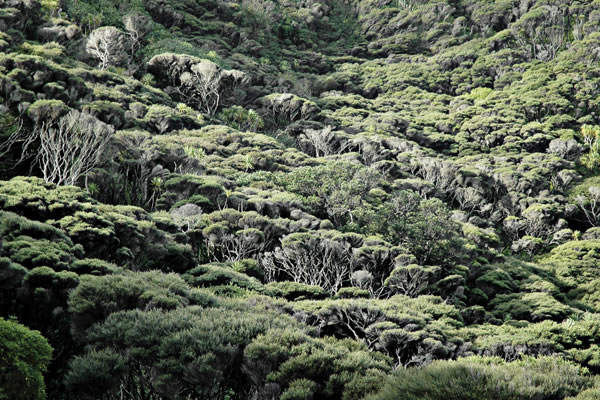Climate-resilient Māori land
To help landowners reduce the risks of increased erosion under climate change, and to maximise their revenue, this project used kaupapa Māori and bio-physical and economic assessment tools to understand and evaluate different land-use decisions within a range of potential climate change scenarios.

The East Coast is suffering extremely high rates of erosion and sedimentation – the repercussions of previous land management decisions. More extreme rainfall under climate change will likely cause erosion to get worse, and degraded soils mean the effects of drought may become more severe.
If current land use practices continue, our research estimated that erosion could increase by 41% by the end of the century. Our analysis found that between 16,700 and 41,900 hectares of pasture would have to be afforested to achieve erosion reduction targets, equivalent to 19–48% of the current area of sheep-beef farming in the catchment.
Alongside landowners, we identified multiple land-use opportunities with a range of social, economic, environmental, and cultural benefits. These included alternative forestry options (mānuka, kānuka, tōtara, mataī, puriri, harakeke, and kawakawa), horticultural options (including honey, olives and olive oil, lemons, and hemp) and other medicinal and cosmetic business options derived from mātauranga Māori.
Under all future climate change scenarios, our research found that re-foresting the land – particularly with indigenous species – results in a significant reduction of soil erosion for the Waiapu catchment. Significantly, afforestation also helps realise the core values and aspirations of Māori landowners, which include kaitiakitanga (sustainable resource management), manaakitanga (reciprocal obligations) and whakatipu rawa (growing the asset base).
The implications of this finding are complex, for example, raising issues about inter-generational equity. Nevertheless, this finding also provides a strong case that ecosystem services such as erosion control and carbon sequestration should be paid for – potentially leading to an additional revenue source for landowners.
Our research presents recommendations for governance arrangements in Te Tairāwhiti, policy recommendations (including for the Ministry of Primary Industries and the Gisborne District Council), recommendations for Māori landowners, and recommendations for working with Māori to address climate issues. Our final report also highlights key areas where further research, or research drawing on different (kaupapa Māori) methodologies, is necessary.
This research project was a partnership between Manaaki Whenua – Landcare Research, SCION and He Oranga mō ngā Uri Tuku Iho Trust and the work was based in Ruatōrea, Waiapu Valley, Te Tairāwhiti. The strong and diverse relationships built throughout this project ensure our research has been properly shared with landowners and that pathways will continue to be developed for landowners wanting to implement change. Funding for the project was from Deep South Vision Matauanga.
